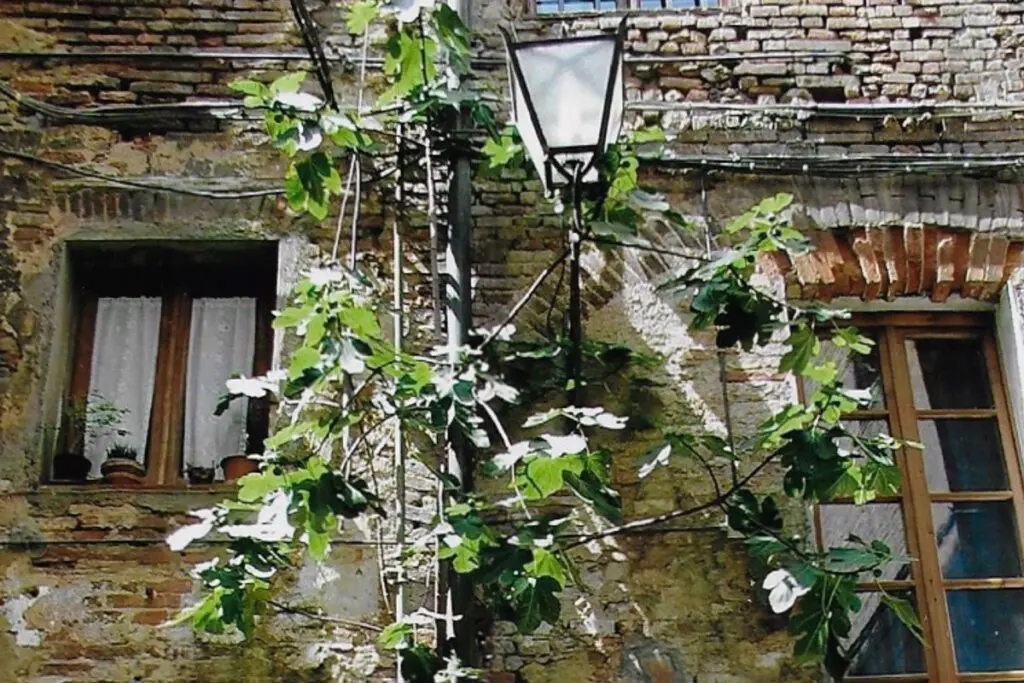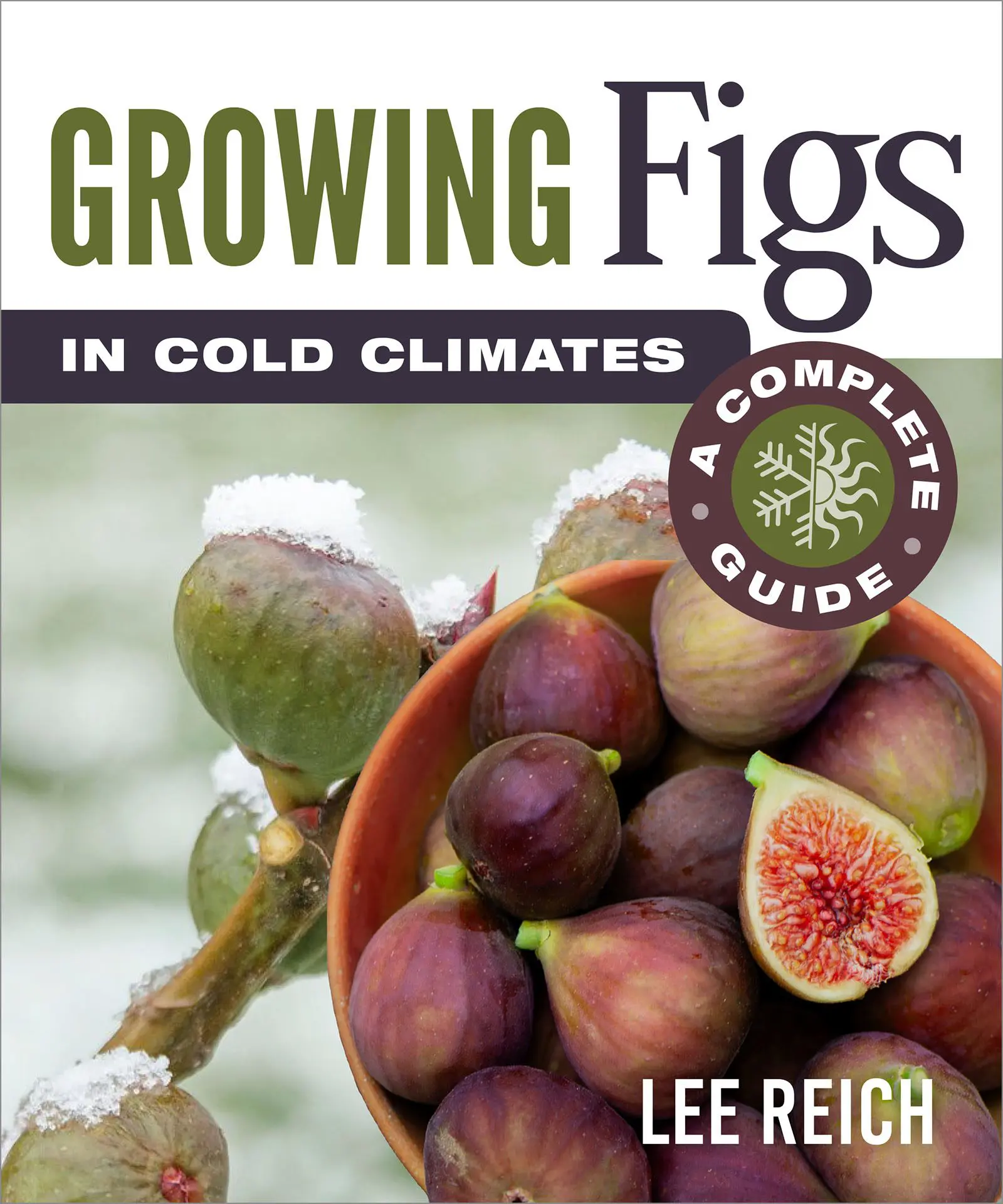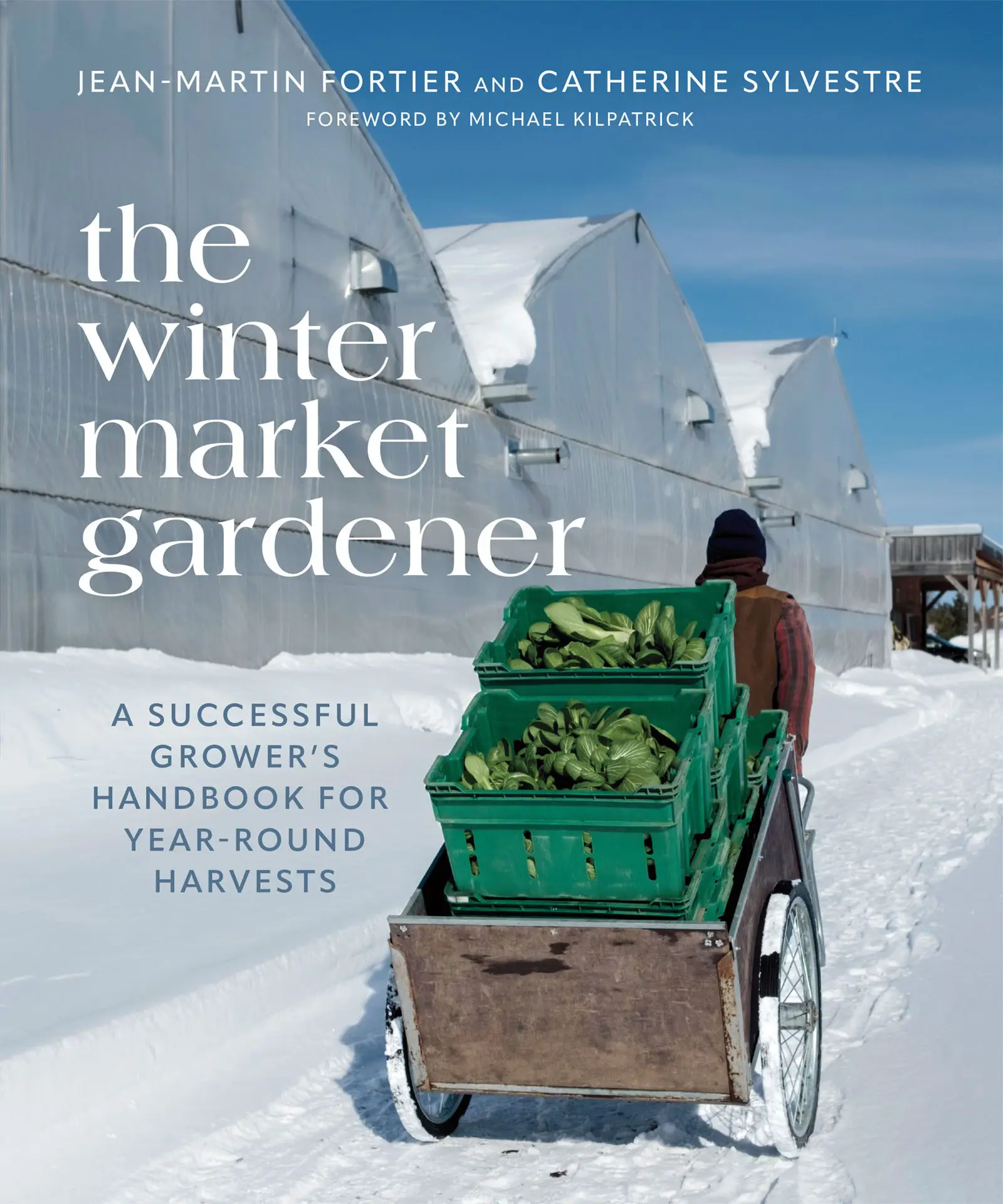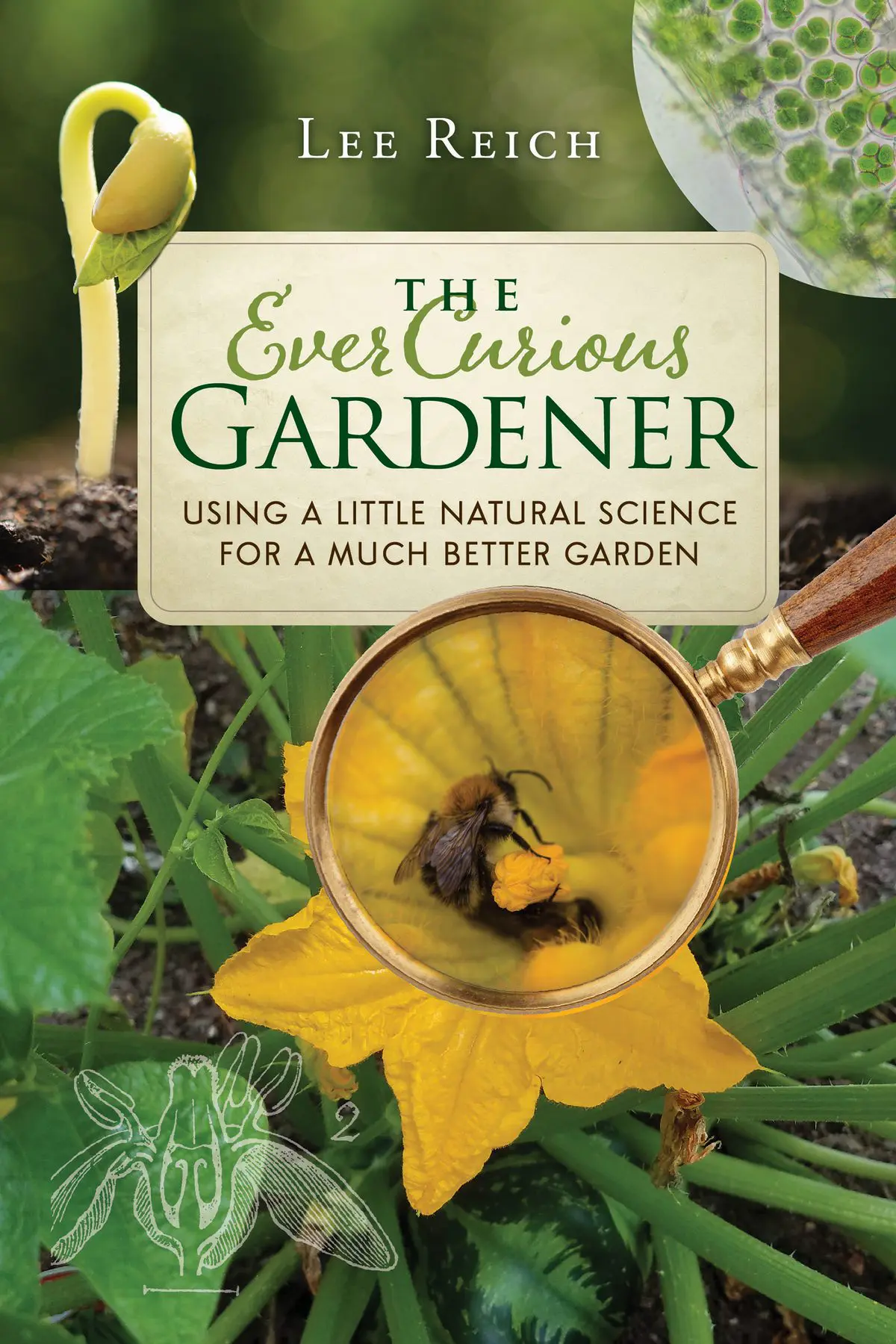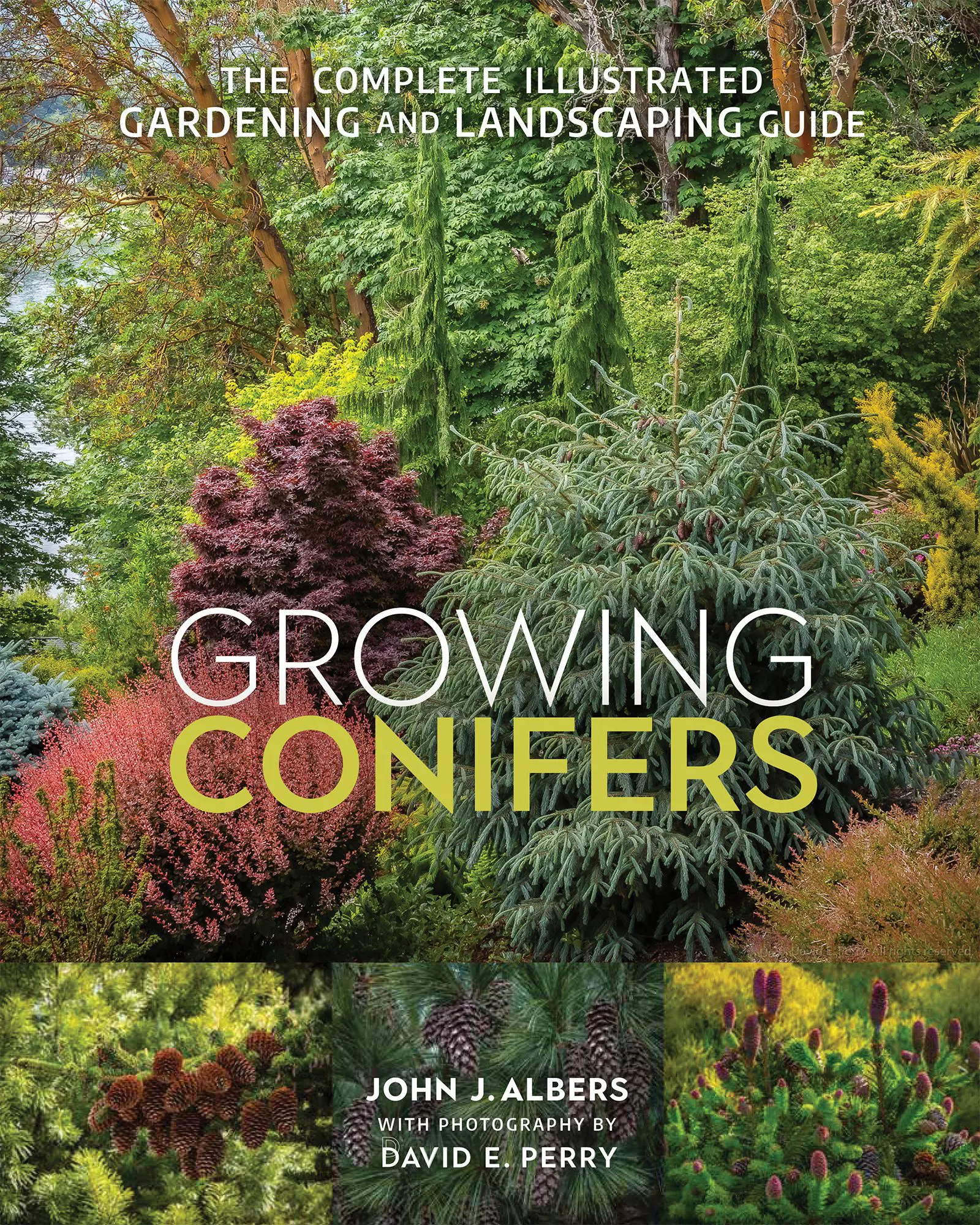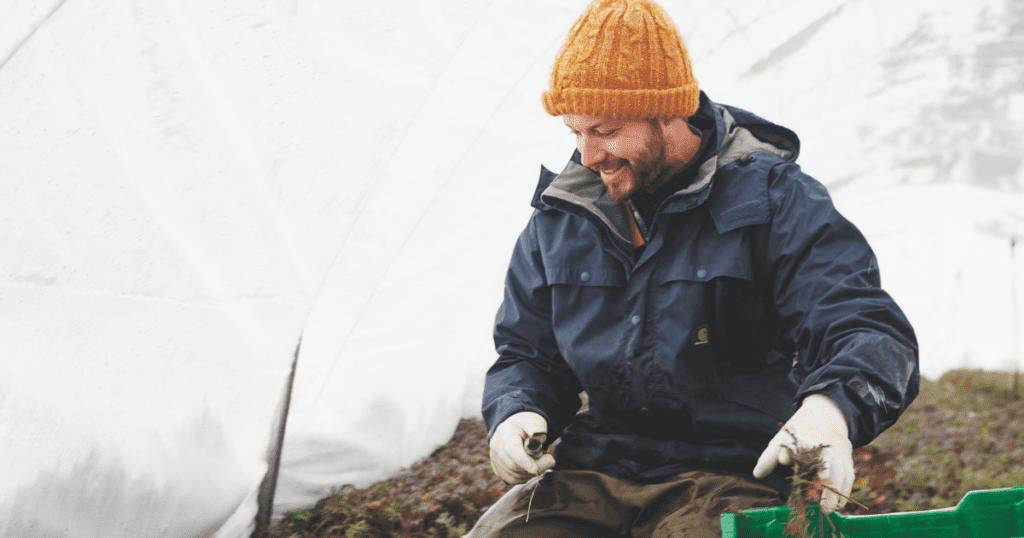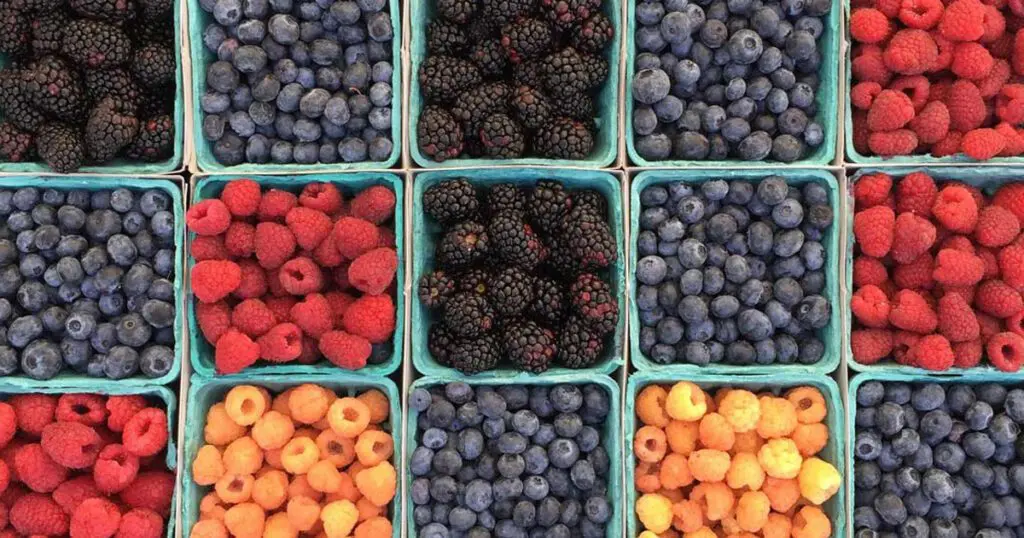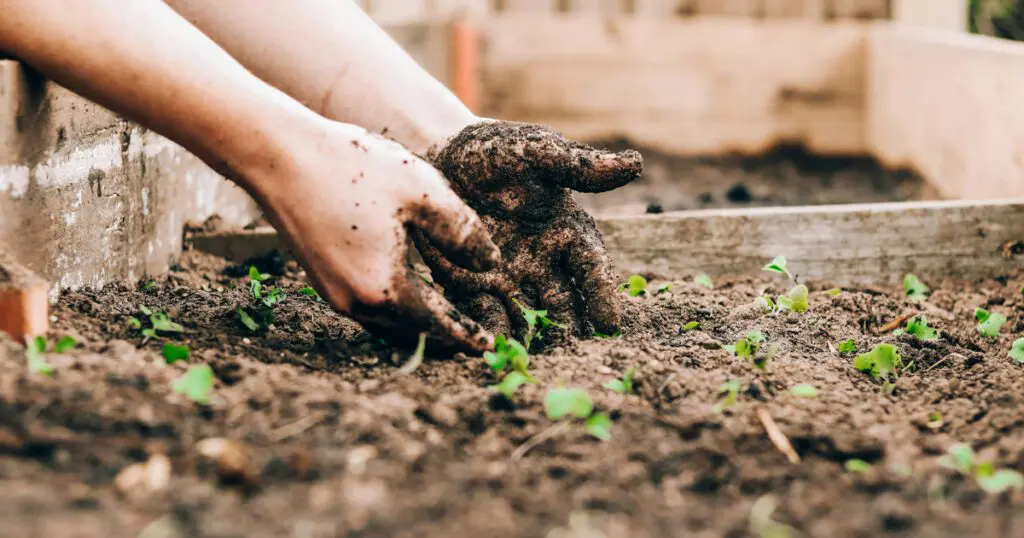
For some, the taste of a fresh, juicy fig brings memories of travel to warm, faraway places. However, if you live in a colder region – it’s possible to enjoy figs grown on your own property. In Growing Figs in Cold Climates: A Complete Guide, Lee Reich provides methods for cultivating figs in cold regions. Today, Lee explains why it’s entirely possible to grow figs in cold climates in an excerpt shared from his book.
To imagine the conditions under which a fig tree really thrives, picture an Arabian courtyard in summer. There stands a fig tree, basking in abundant, hot sunshine. Hmm… I wrote, above, that figs can be grown in cold climates. What’s up?
Heat and sun are what a fig thrives on in summer. Winter is another story. Many cold areas of the world—interior North America and eastern Europe, for example—host a continental climate, cold in winter but usually hot and sunny in summer. The hottest and most humid weather I ever experienced was in Wisconsin, even though that extreme lasted only a few weeks.
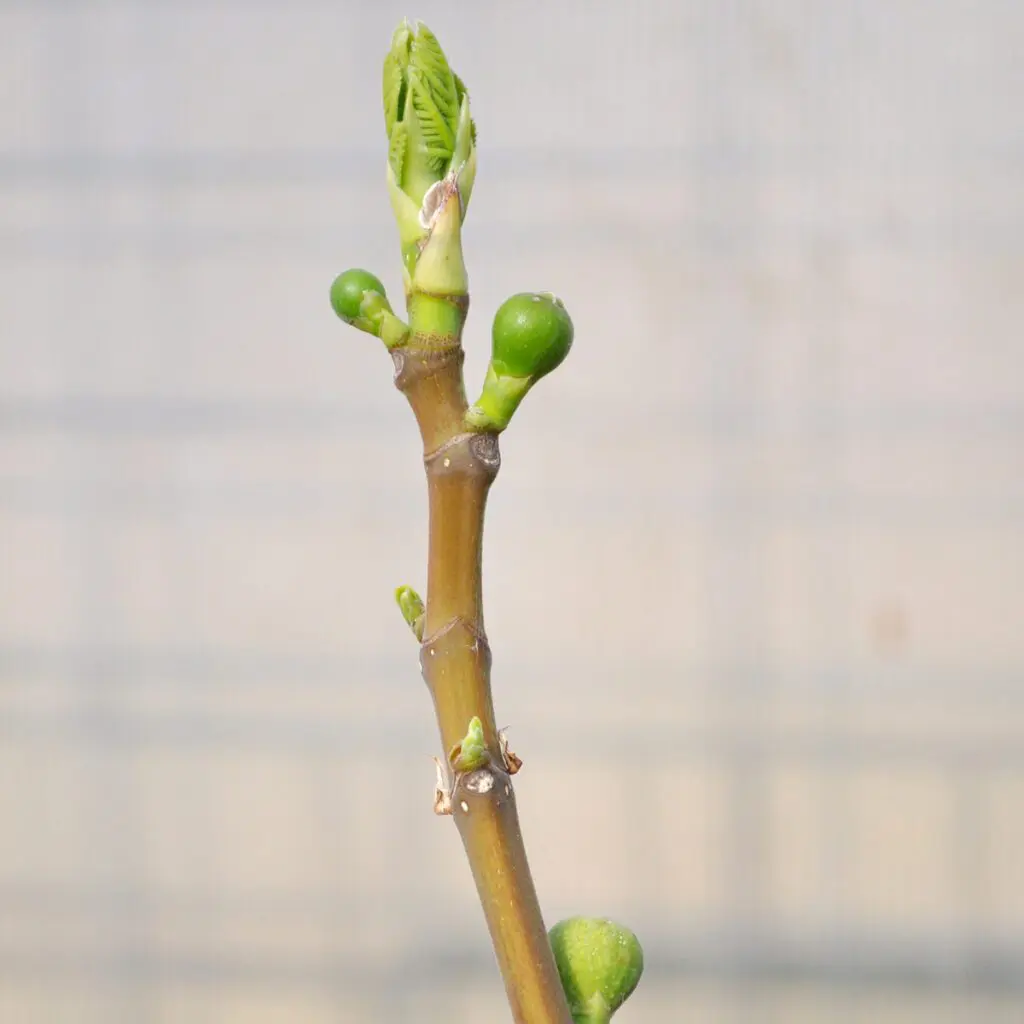
The Wisconsin climate is just one kind of cold climate. There are others, which I’ll get to later on, at least insofar as those climates relate to growing figs.
Here’s a summary of the reasons you can grow figs in your cold climate:
- Fig is a subtropical plant that tolerates temperatures well below freezing.
- The plant enjoys a winter rest.
- The plant is leafless during that winter rest.
- Pollination is unnecessary.
- Fig has a unique fruit-bearing habit.
- And, fig plants tolerate abuse.
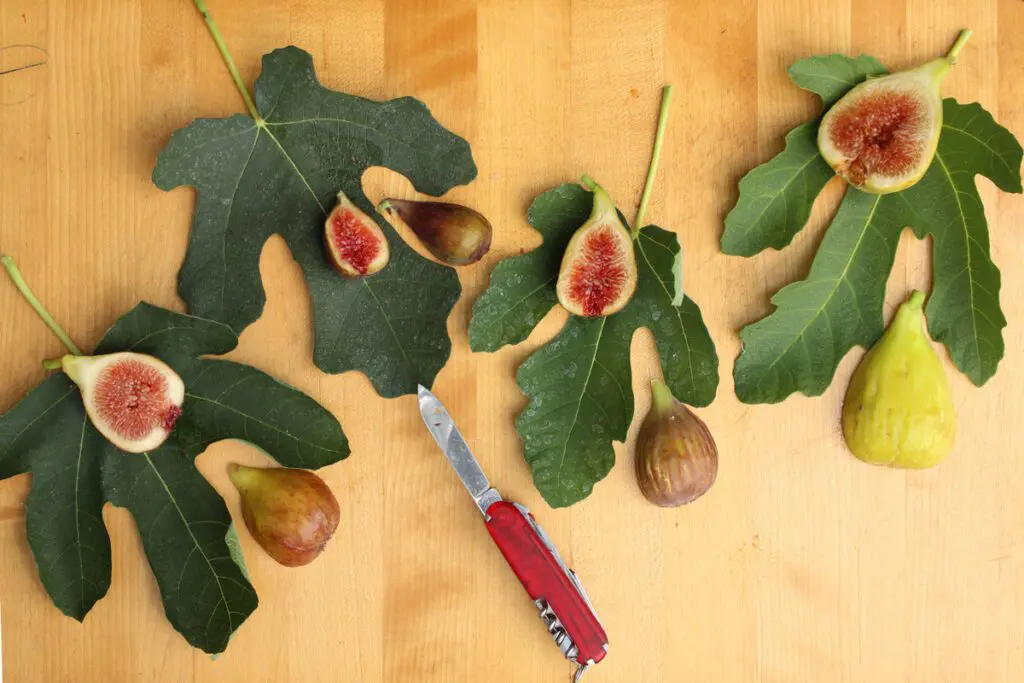
Let me elaborate.
Fig is a very adaptable plant, and can be grown well beyond its original home for a number of reasons. For starters, it’s not a tropical plant. It’s a subtropical plant, tolerating subfreezing temperatures—typically down into the low ’teens (about -10°C, USDA Cold Hardiness Zone 8), more or less depending on the particular variety. A fig tree actually enjoys a winter rest at cold temperatures. And it does so in the nude, leafless in winter, so light is unnecessary during that period. As such, it can be buried or packed away in dark storage for winter, another trait that makes it easier for us cold climate growers to grow figs. No need for a warm greenhouse. Or any greenhouse.
Most fruit plants need pollination to set fruit. In some cases, self-pollination suffices; in others cross-pollination is necessary, with pollen supplied by a different clone or variety of the same kind of fruit. Not to worry when growing figs; most varieties of this ever-adaptable plant don’t need any pollination (neither self nor cross-pollination) at all to bear fruit!

Botanically, a “fig fruit” is a synconium, which is essentially inside-out stem tissue with flowers lining its insides. (Botanically, the actual fig fruits are all the little, round drupelets on the inside of what we usually call the “fig fruit.”)
Far from the shores of the Middle East, what we usually grow are varieties of “Common” type figs. Common type fig varieties, true to their name, are the category to which most fig varieties belong, and they bear fruits without pollination.
Beyond the fig’s natural habitat we might also grow one of the relatively few “San Pedro” type fig varieties, which bear a breba, or early, crop without pollination, but usually need pollination for the later, main crop. (These two crops will be explained shortly.) The important point for us cold-climate fig growers, is that pollination is unnecessary.
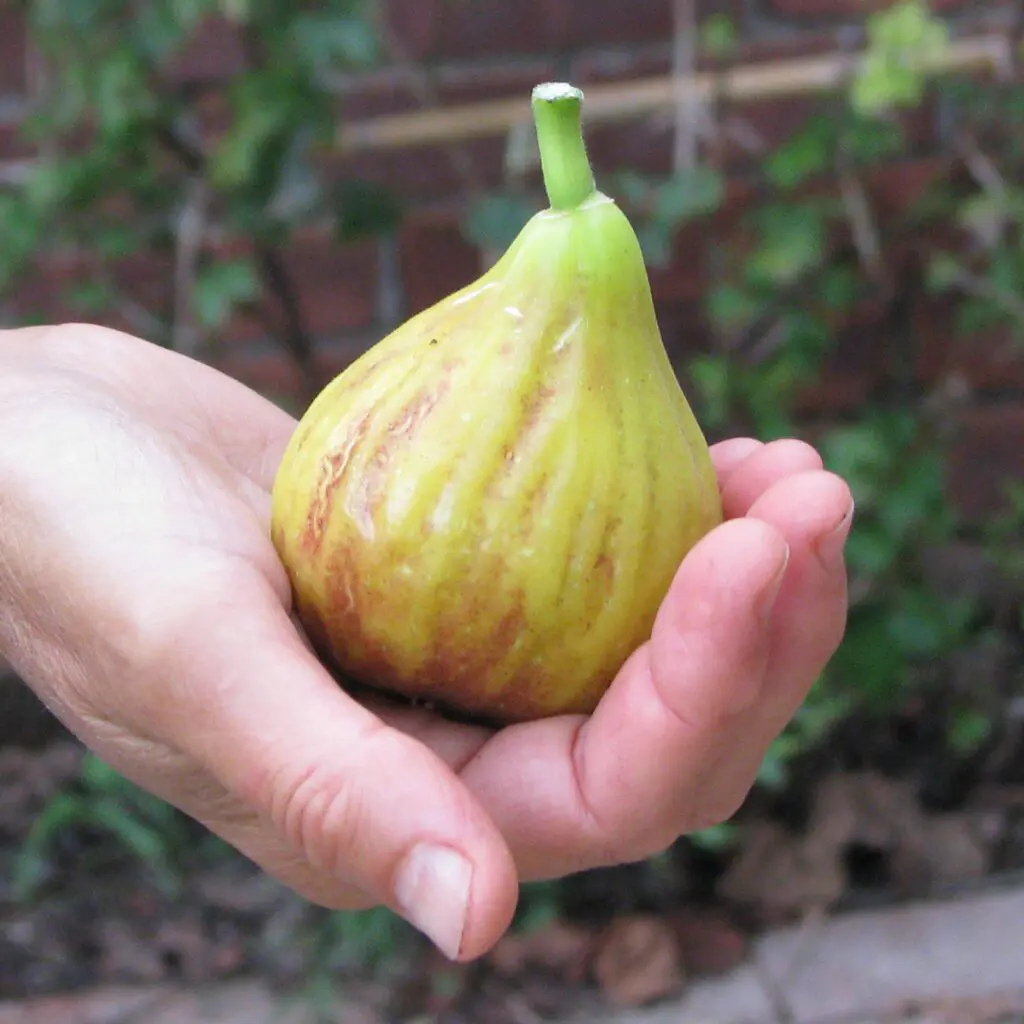
For completeness, allow me to mention a third type of fig, “Smyrna” type, which will not bear any fruit without pollination. In the case of Smyrna type figs and the main crop of San Pedro figs, cross-pollination is needed, and the pollen for that sexual exchange must come from a special type of fig known as a caprifig. Caprifigs are inedible but do have male flowers.
Fruit Bearing Habit
A peach tree bears fruits on one-year-old stems, that is, stems that grew the previous season. An apple tree usually bears fruit on stems two, three, or more years old. Most fruits that grow in cold or even frigid climates are borne on stems that grew one or more years’ previously.
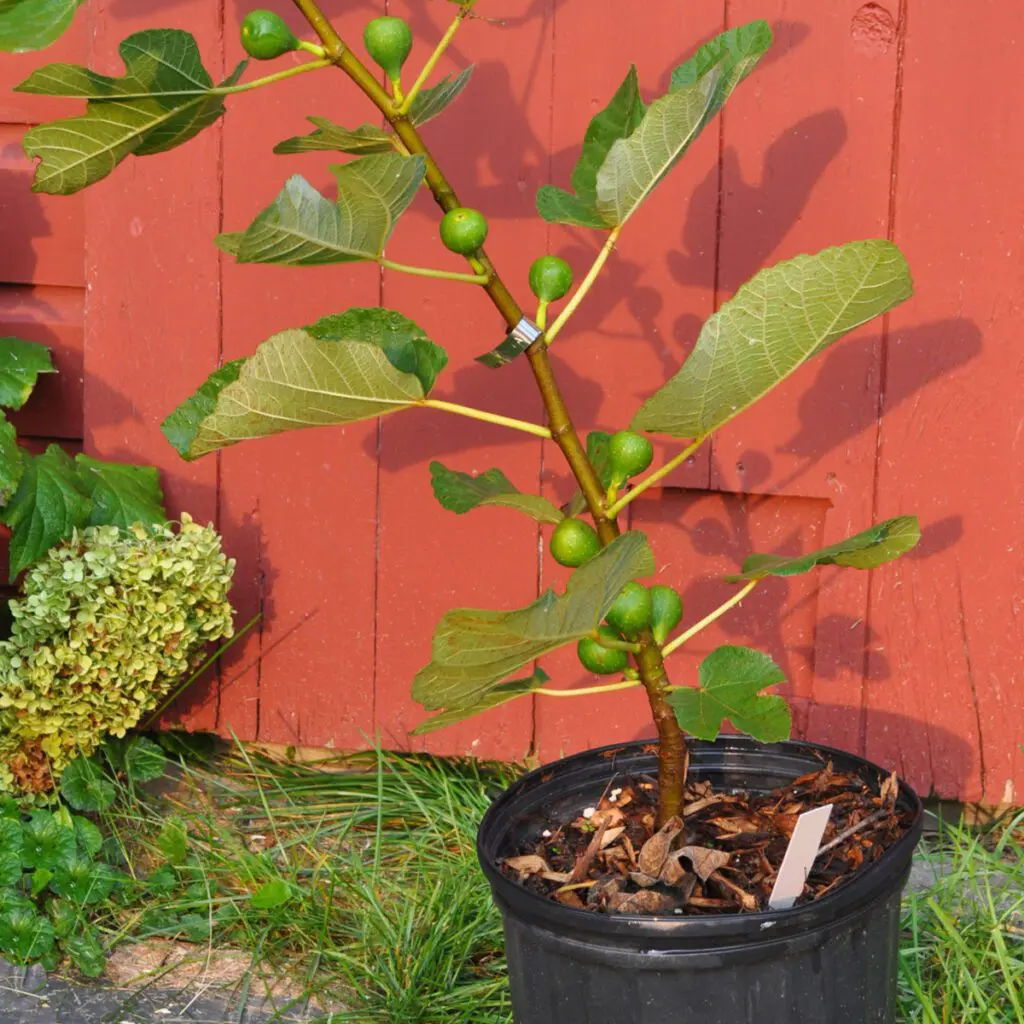
Figs are rather unique among fruit plants in their bearing habit. A fig tree might bear fruit on new, growing shoots; on one-year-old stems; or on both new, growing shoots and on one year-old stems. This is yet another reason that figs are adaptable to cold climate growing—there’s not necessarily a need to have stems survive winter in order to get a crop the following season. You can cut back stems in order to more easily protect them from cold or to make it easier to move the whole plant to a protected winter home. How your plant bears fruit depends on both the variety and how you prune it.
A nice offshoot (sic) of this bearing habit, for fig lovers/growers everywhere, is that fig plants are very quick to come into bearing. I’ve had plants bear the season after I rooted them from cuttings!
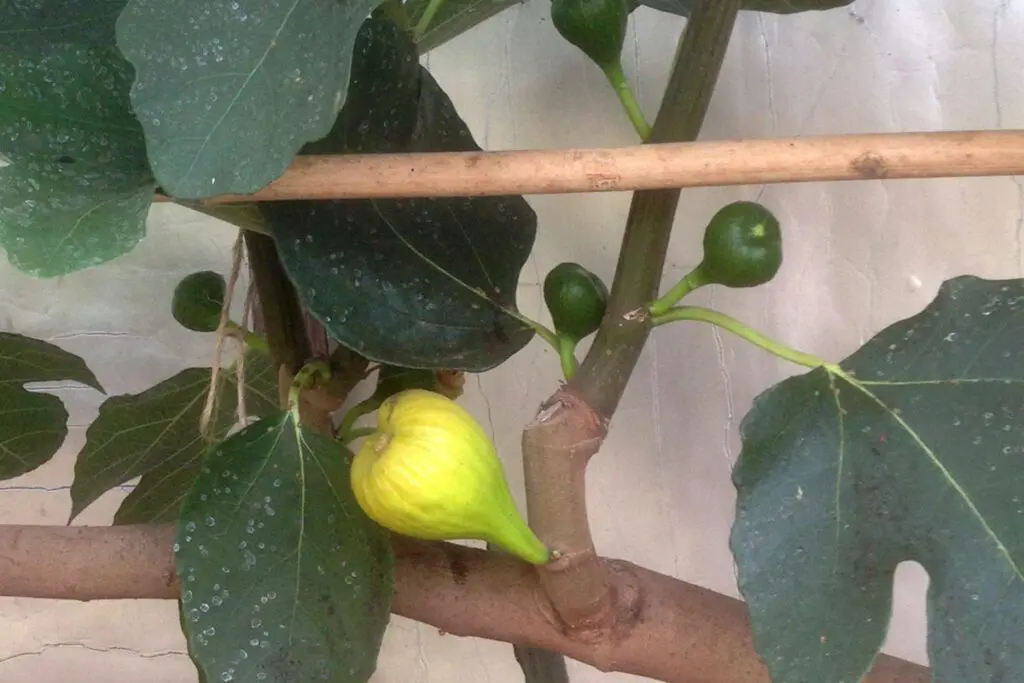
Many fig varieties potentially bear two crops each year. First to ripen is the breba crop, borne on one-year-old stems. The so called main crop ripens later, developing in leaf axils of new, growing shoots. The fruit of the breba crop and the main crop might differ in appearance, size, and flavor.
The whole breba crop ripens more or less contemporaneously. In contrast to the breba crop and to most tree fruits, a fig’s main crop ripens over a long period. New fruits keep forming at the ends of growing stems as older fruits, lower down along the stem, are ripening—until growth is slowed or arrested by insufficient light, warmth, water, or fertility. Fruit buds that do not yield main crop figs one season can give rise to the following season’s breba crop, if that variety is one that bears a breba crop.
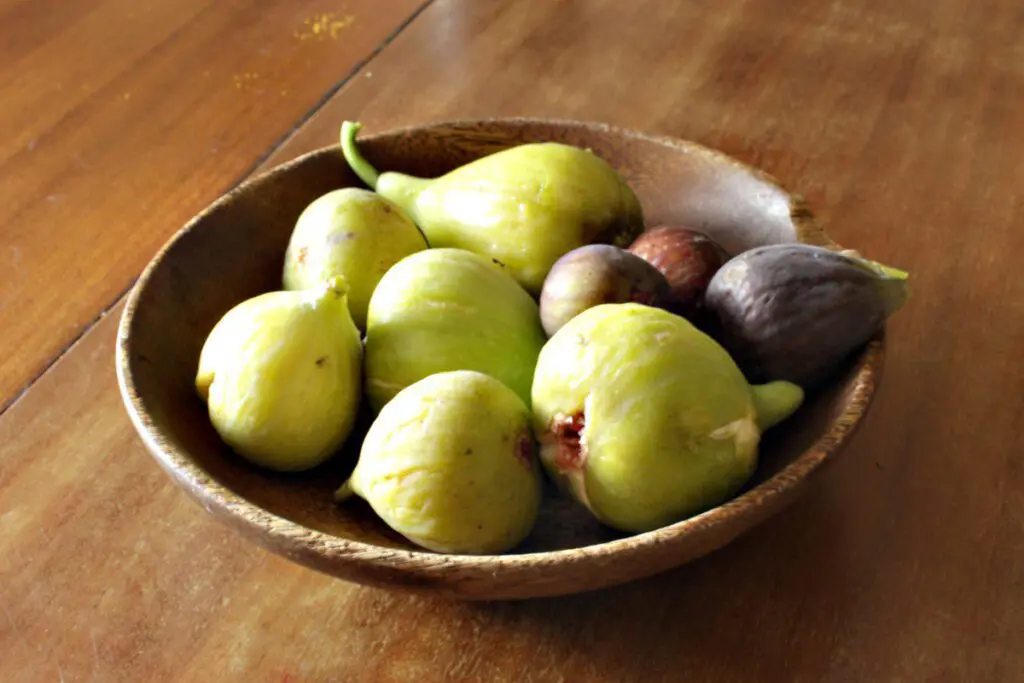
The Fig Tree
Let’s not become so focused on the delectable fruit that we ignore the tree itself. After all, a trunk (or trunks) and leafy stems are needed for places on which to hang fruit as well as for shuttling nutrients around and harnessing sunlight for growth and good tasting fruit.
Fig trees grow 20 to 30 feet high and are typically more broad than tall. They can be considered as tree-like shrubs, or, because they so readily send up new sprouts from ground level, shrublike trees. Such multi-stemmed fig trees are common in climates where winter cold periodically kills all or portions of the trees to ground level.
Looking below ground, you’d find that, once established, fig roots run deep and wide. (And, also, shallow and wide, as evidenced by the many shallow roots running just below and at the ground surface from the fig trees planted in the ground in my greenhouse.)
In the ground, those far-ranging roots make figs quite drought tolerant; not so, though, for plants growing in the confines of a flower pot or other container.
Above ground, stems can be equally vigorous. Often too much so, with a sacrifice of fruit yield. But that depends, to some degree, on the variety.
A fig tree’s tolerance for abuse is yet another asset for cold-climate fig growers. The stems are quite flexible and the roots regenerate readily. You can bend stems and lop back roots all with no ill effect, which, you’ll soon see, is useful for growing figs in cold climates.
All this is not to say that a fig tree will live through a frigid winter and bear good fruits with any amount of abuse. They do need some care, which is my segue to talk about pruning.
